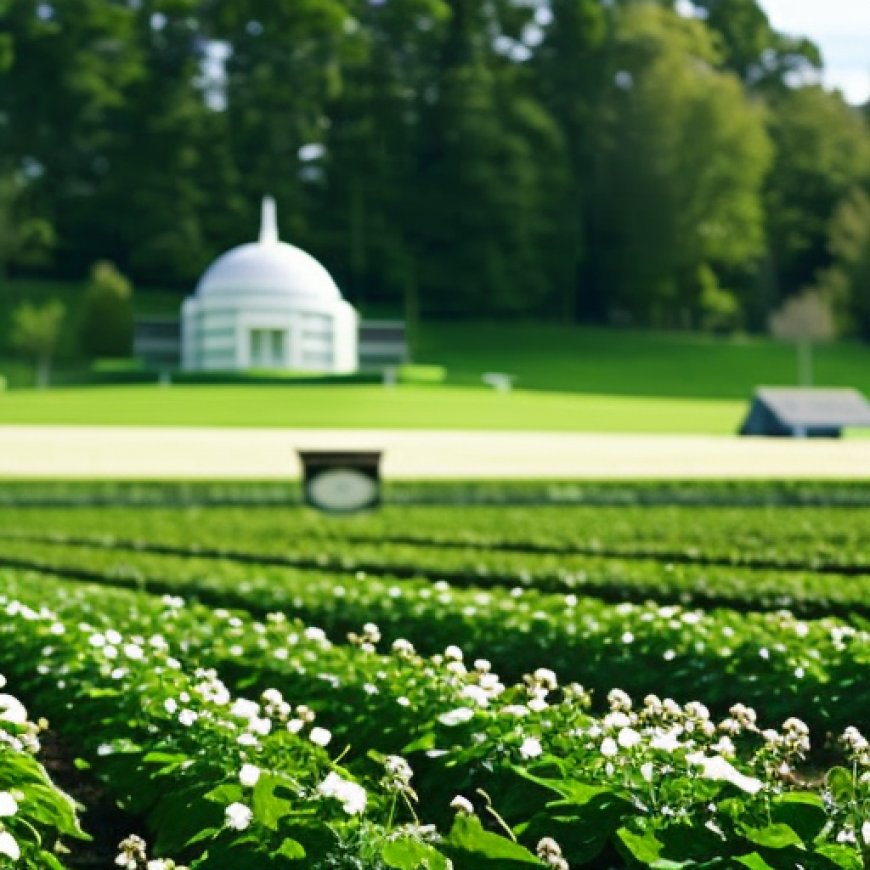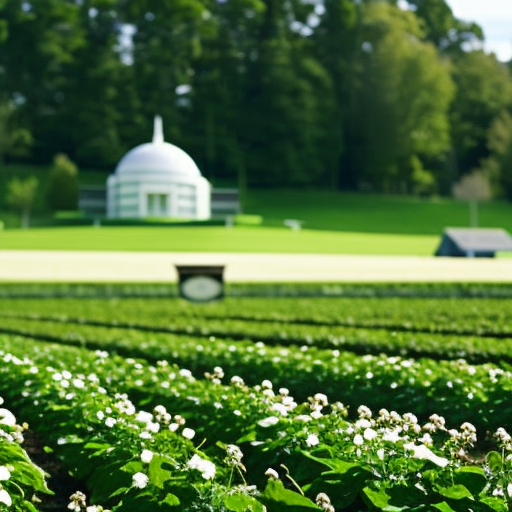Andrews University Sustainable Agriculture Receives Certification
Andrews University Sustainable Agriculture Receives Certification North American Division of Seventh-day Adventists


The Andrews University Agriculture Education Center Achieves MAEAP Certification
Introduction
On October 11, 2023, the Department of Sustainable Agriculture at Andrews University achieved Michigan Agriculture Environmental Assurance Program (MAEAP) certification for its livestock system at the Agriculture Education Center. The education center is now among five percent of farms in Michigan to have earned this certification.
About MAEAP
The MAEAP program is operated by the Michigan Department of Agriculture & Rural Development (MDARD). It consists of a voluntary certification process that aims to prevent and minimize agricultural pollution risks in farms across Michigan. According to the program website, “MAEAP-verified farms keep their land, water, and air as healthy as the food they produce. They represent the highest standards of environmental stewardship and the pinnacle of responsible agriculture.”
Commitment to Sustainable Development Goals
“We want to witness to our community that we care deeply about the land, water, and animals we are given custody of during the time we are here,” says Katherine Koudele, chair of the Andrews University Department of Sustainable Agriculture. She believes the certification aligns with the university’s mission to seek knowledge, affirm faith, and change the world, noting, “By improving the quality of the land and water that has been given to us, we feel that we are changing the world a little bit at a time. The students that study here will be able to learn these practices and utilize them after they go to other parts of the world.”
Agriculture at Andrews University
Agriculture has long been an important aspect of both Andrews University and its predecessor, Emmanuel Missionary College. The first students of the Department of Agriculture graduated in 1918. In recognition of changing practices within the field, the Department of Sustainable Agriculture was renamed and reintroduced in 2015 in accordance with its motto, “Educating Earth’s Caretakers.” When the Andrews University dairy closed in 2018, many of its facilities were then repurposed into the agriculture education center within the Department of Sustainable Agriculture.
New Practices for Environmental Sustainability
The agriculture education center is home to a wide variety of animals, including cattle, chickens, sheep, rabbits, pigs, and goats. Although many proper management guidelines were already in place, the education center team used the departmental transition to implement new practices. “We wanted to follow a different model of animal agriculture than the one the dairy followed, which would mean fewer animals and for them to have as much access to pasture as possible,” explains Koudele. “We are following environmentally friendly practices such as rotational grazing and free-range pasture.”
MAEAP Certification Process
In accordance with these goals, the three-month MAEAP certification process began in July 2023. The farm was evaluated based on categories such as manure and nutrient management, land application, record-keeping, feed storage, and lot management. Multiple soil samples were collected and farm operation details were assessed, all with the central goal of preventing pollution and runoff into the nearby St. Joseph River. In October, a verifier from the Michigan MDARD state office completed a final inspection and approved the certification for the farm’s livestock system. The MAEAP certification affirms the University’s commitment to practicing good stewardship of Michigan’s land, water, and animals.
Continued Sustainability Efforts
“We felt that this certification would be one more piece of evidence of our determination to maintain and continue to develop environmentally friendly practices,” Koudele expresses. “We believe that properly caring for the Earth is a God-given mandate, and we want to be an example and leader in obeying this mandate.” In the future, the department plans to continue pursuing sustainability through other environmentally conscious practices and related certifications. “We plan to keep managing the agriculture education center the way we have been, and that will keep us in compliance with the certification requirements,” says Koudele. “We will be reviewed every five years to assure that we are maintaining our certification.”
Conclusion
To learn more about the Department of Sustainable Agriculture, click here.
— Isabella Koh is an Andrews University Communication writer.
SDGs, Targets, and Indicators
1. Which SDGs are addressed or connected to the issues highlighted in the article?
- SDG 2: Zero Hunger – The article discusses the Department of Sustainable Agriculture’s efforts to improve the quality of the land and water, which aligns with the goal of achieving food security and promoting sustainable agriculture.
- SDG 6: Clean Water and Sanitation – The article mentions the goal of preventing pollution and runoff into the nearby St. Joseph River, which relates to the objective of ensuring access to clean water and sanitation for all.
- SDG 12: Responsible Consumption and Production – The article highlights the department’s commitment to environmentally friendly practices and responsible agriculture, which is in line with the goal of promoting sustainable consumption and production patterns.
- SDG 15: Life on Land – The article mentions the department’s focus on implementing environmentally friendly practices, such as rotational grazing and free range pasture, which contributes to the conservation and sustainable use of terrestrial ecosystems.
2. What specific targets under those SDGs can be identified based on the article’s content?
- SDG 2.4: By 2030, ensure sustainable food production systems and implement resilient agricultural practices that increase productivity and production, that help maintain ecosystems, that strengthen capacity for adaptation to climate change, extreme weather, drought, flooding, and other disasters, and that progressively improve land and soil quality.
- SDG 6.3: By 2030, improve water quality by reducing pollution, eliminating dumping and minimizing release of hazardous chemicals and materials, halving the proportion of untreated wastewater, and increasing recycling and safe reuse globally.
- SDG 12.4: By 2020, achieve the environmentally sound management of chemicals and all wastes throughout their life cycle, in accordance with agreed international frameworks, and significantly reduce their release to air, water, and soil in order to minimize their adverse impacts on human health and the environment.
- SDG 15.2: By 2020, promote the implementation of sustainable management of all types of forests, halt deforestation, restore degraded forests, and substantially increase afforestation and reforestation globally.
3. Are there any indicators mentioned or implied in the article that can be used to measure progress towards the identified targets?
- Indicator for SDG 2.4: Adoption of sustainable agricultural practices, such as rotational grazing and free range pasture, which contribute to maintaining ecosystems and improving land and soil quality.
- Indicator for SDG 6.3: Reduction in pollution and runoff into the nearby St. Joseph River, indicating improved water quality.
- Indicator for SDG 12.4: Implementation of environmentally friendly practices and responsible agriculture, demonstrating the sound management of chemicals and wastes.
- Indicator for SDG 15.2: Increase in afforestation and reforestation efforts within the agriculture education center, contributing to sustainable forest management.
Table: SDGs, Targets, and Indicators
| SDGs | Targets | Indicators |
|---|---|---|
| SDG 2: Zero Hunger | 2.4: By 2030, ensure sustainable food production systems and implement resilient agricultural practices that increase productivity and production, that help maintain ecosystems, that strengthen capacity for adaptation to climate change, extreme weather, drought, flooding, and other disasters, and that progressively improve land and soil quality. | Adoption of sustainable agricultural practices, such as rotational grazing and free range pasture. |
| SDG 6: Clean Water and Sanitation | 6.3: By 2030, improve water quality by reducing pollution, eliminating dumping and minimizing release of hazardous chemicals and materials, halving the proportion of untreated wastewater, and increasing recycling and safe reuse globally. | Reduction in pollution and runoff into the nearby St. Joseph River. |
| SDG 12: Responsible Consumption and Production | 12.4: By 2020, achieve the environmentally sound management of chemicals and all wastes throughout their life cycle, in accordance with agreed international frameworks, and significantly reduce their release to air, water, and soil in order to minimize their adverse impacts on human health and the environment. | Implementation of environmentally friendly practices and responsible agriculture. |
| SDG 15: Life on Land | 15.2: By 2020, promote the implementation of sustainable management of all types of forests, halt deforestation, restore degraded forests, and substantially increase afforestation and reforestation globally. | Increase in afforestation and reforestation efforts within the agriculture education center. |
Behold! This splendid article springs forth from the wellspring of knowledge, shaped by a wondrous proprietary AI technology that delved into a vast ocean of data, illuminating the path towards the Sustainable Development Goals. Remember that all rights are reserved by SDG Investors LLC, empowering us to champion progress together.
Source: nadadventist.org

Join us, as fellow seekers of change, on a transformative journey at https://sdgtalks.ai/welcome, where you can become a member and actively contribute to shaping a brighter future.







